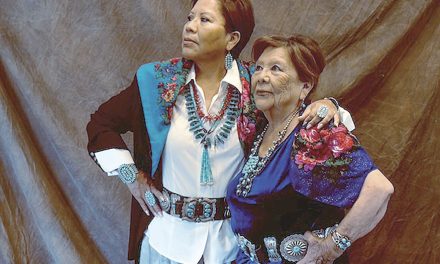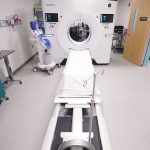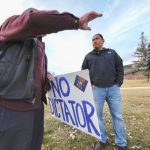
50 Years Ago: BIA looks nationwide for Intermountain boss
Intermountain Boarding School is back in the news and once again it was not in a positive way. Back in 1970, the school, located some 600 miles from the reservation in Brigham City, Utah, had been in the news for more than two years because of claims that the administration could not maintain control over the 1,200 students who went to school there.
The great majority of the students were Navajo and there were accusations of weekend drinking parties and older students harassing younger students. There were also reports that some of the older students publicly confronted teachers if they felt that the work required in the course was too large.
In 1969, after hearing of some of these reports, the Navajo Tribal Council sent three of their members to look into the allegations and they came back with evidence that not only were the accusations true, but students were rioting because of the adverse conditions at the school.
The school’s superintendent lost her job and the school’s advisory board, led by tribal chairman candidate Sam Billiman, was put on notice that they had to take steps to get the school under control or face being replaced.
So what did they do? One of their first decisions was to appoint Faralie Speil as interim superintendent. The Council immediately objected because Speil not only was Anglo but she was well-known figure as a BIA educator known for promoting Anglo values in education.
The Council made it clear they wanted someone who would create policies that would promote Navajo cultural values. BIA officials fought back by telling Council members not to get upset.
Spiel was given the superintendent position to restore order as BIA education officials made a nationwide search to find a Navajo educator who would carry out the goals of the Council. Council delegates didn’t believe that for a second. Annie Wauneka, the second woman to be elected to the Council, pointed out that the BIA had a history of lying to the Council. But it goes beyond that, according to member of the school’s advisory board who said they were concerned because no one brought this before the board for approval.
“There is not much sense for us being in existence,” one unnamed board member told the Times.
According to the BIA, there are more than 400 Navajos employed by the railroad industry throughout the country.
The BIA statement said Navajos are being sought out by railroad companies to help maintain the track system throughout the country. “They are considered to be hard-working employees who don’t mind spending weeks and even months away from their homeland,” said the press statement.
One reason for this may be the high pay associated with working for the railroad. Employees can make up to $350 a week, far more than they could earn by taking a minimum wage on or near the reservation.
Many of those who found employment with the railroads are veterans of the military who fought during World War II and became used to living off the reservation.
Navajo election officials are reporting a higher than usual interest in the upcoming tribal election from Navajos living in the Los Angeles area.
The Times article does not give a reason for the increased interest, but it may have been due to increased requests to the tribe for scholarship funds so that Navajo students living in the Los Angeles area have increased opportunities to secure these funds.
In the 1960s, when scholarship funds were low, chapter governments had more control over who received the funds, which resulted in Navajos living off the reservation having difficulties tapping into the funds. But under the tribe’s chairman, Raymond Nakai, the tribe had been putting at least a million dollars a year into the fund and regulations were enacted to enable Navajos living off the reservation an opportunity to receive financial help.
While registered Navajos living in Los Angeles and nearby communities can vote by absentee ballot, election officials said the increased interest has led to a decision to set up a voting booth in the area where Navajos can come and vote in person.
The polling site is the Indian Revival Center, located in Bell Gardens, which is a small community located about 12 miles southeast of Los Angeles. The Rev. Arthur Stoneking, a member of the Winnebago Tribe and pastor of the Indian Revival Center, said this is the perfect place to choose as a polling site since Bell Gardens has the highest concentration of Navajos in the Los Angeles area. Registered voters can come in and vote in person on either Oct. 22 or 23.
This is being held prior to the reservation polling dates of Nov. 10 to 11 in order to give officials time to drive the ballots to Window Rock so they can be counted with the reservation vote. In order to give LA voters a chance to learn first-hand the platforms of the two candidates, Nakai and MacDonald have been invited to come to the center to speak.
Both have accepted the invitation. Stoneking said Navajos living in the Los Angeles area have been trying for years to get the tribal government to formally allow them to have a greater role in governmental affairs.








 Highway 264,
Highway 264, I-40, WB @ Winslow
I-40, WB @ Winslow